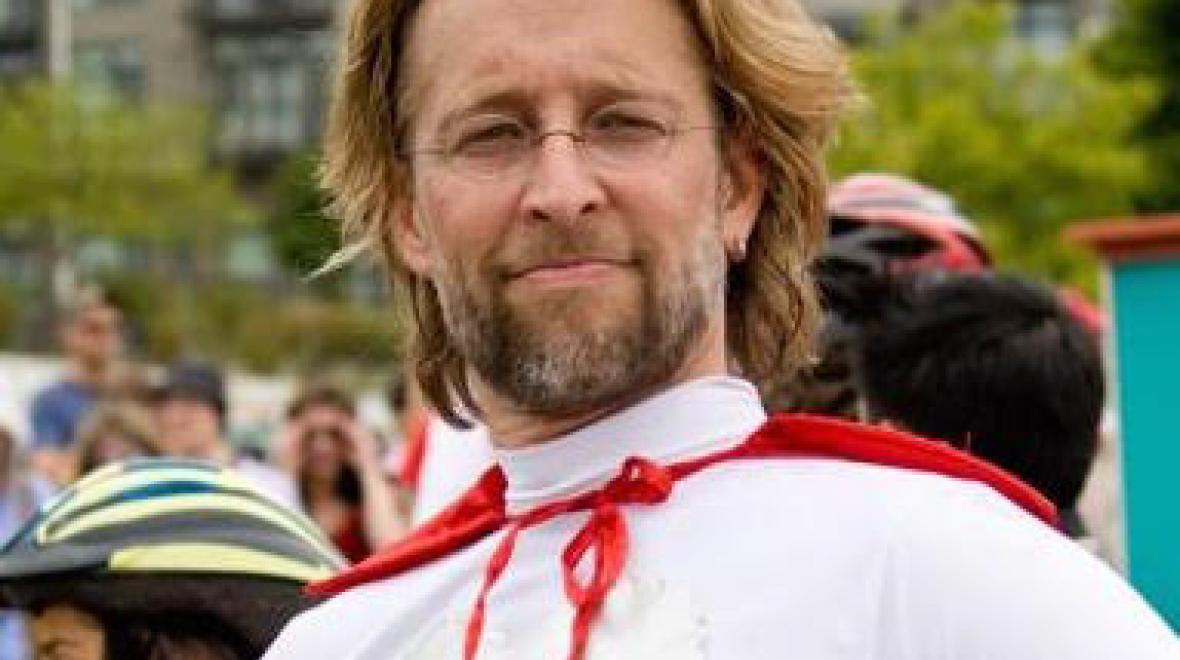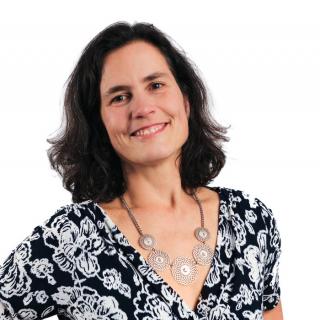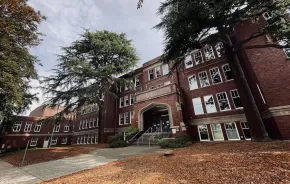
Take a page out of his book
Teacher Tom shares his tricks for creating your own background playground on the cheap.
In 2009, Tom Hobson started a blog as a way of “starting a conversation with himself.” As the lead teacher of a small, play-based cooperative preschool in Seattle’s Fremont neighborhood, he wanted an outlet for his observations about the daily happenings of his school, Woodland Park Cooperative School. He wanted a place to collect his musings about the theory and practice of a play-based, parent-run preschool in real time — the good, the bad and the learning that occurs for everyone involved, not just the kids.
Eight years later, the result — “Teacher Tom’s Blog,” — has become something of a worldwide phenomenon in early education circles. An astounding 250,000 readers from all over the world visit his blog each month, and he’s invited to speak internationally about play-based education in general and his school in particular.

Now, Teacher Tom has a book. At his readers’ urging, Hobson recently published a volume that’s a compilation of his best blog posts. Published by Peanut Butter Press, Teacher Tom’s First Book is a highly readable series of essays and stories on topics as wide-ranging as the power of play, the purpose of risk-taking and what democracy looks like in a classroom. If you’re up for a provocative read that will challenge many tenets of conventional parenting wisdom, add it to your reading list.
We caught up with Teacher Tom recently to ask about his book, blog and classroom.
If a casual onlooker were to come to your school, what would they notice?
We start from the premise that the instinct for children to play is really the education instinct. The purpose of play in all animals is to learn. Any time you study children or animals, you’ll see that through their play they are performing their own experiments in the world, asking and answering their own questions about their community, people they find there, the things they find there.
It’s such a more natural way to learn than what we consider to be the traditional model of an adult deciding what a child needs to learn and when they need to learn it and also how they need to learn it, and trying to impose knowledge on the children. We know that children retain just a fraction of the knowledge of what’s being taught through direct instruction. Whereas when children are asking and answering their own questions they learn [much more] because they’re ready for those answers.
Why did you start the blog?
I started it as a conversation with myself. I’d written a couple of articles for traditional print publication on early education, and, of course, they ended up in a recycling bin. Somebody had told me about blogs and this would be a good place to house my writing.
As I began and put those [first blog posts] up, I found myself waking up each morning with something else I had questions about. Any teacher will tell you at the end of the day you have something on your mind, something that went well or went poorly and you need to process it. Over time, people began to find me and I found them and it became a dialogue with other teachers and parents.
What have been some of your most popular posts?
Probably the most-read post I’ve had at this point is called “11 Things to Say Instead of Be Careful.” We spend so much time saying “be careful” to children. The truth is that they are already being careful. Instead, give them specific information so they can see the hazards. “That stick on the tree will poke you in the eye” rather than “be careful.”
I [also] wrote about 5-year-olds "falling behind." About how when policymakers talk about education, they’re all talking about children falling behind, that American kids aren’t keeping up with the rest of the world. That’s patently untrue. This whole idea that if your 5-year-old isn’t reading yet they’re behind is a cruel, unjust thing to say to parents and to the kids. The research is very clear: The natural window for learning to read is somewhere between ages of 7 and 11 years old.
ParentMap recently wrote about your "junkyard playground." What can this type of playground do that a traditional fixed-structure playground can’
A playground like ours costs almost nothing because most of what we have out there is literally someone’s garbage. [These materials are] so versatile. In [more typical] out-of-the-box playgrounds, there is only one way to play on the equipment. So often children start making it more hazardous. They start climbing on the outside of the structure, they start climbing on the roof. They go up the slide; find other ways. Playing involves risk; and when there’s no risk involved — emotional or physical risk — children stop playing. They play the risk out of it very quickly.
But the kind of playground we have, day after day after day, they never stop playing with it. it’s running water and it’s sand and sticks and rocks, so open-ended you can never run out of things to do. Many of our kids come to our school for three years and they continue to play quite happily on that playground. And we spent so little money.
That’s another one of my most read-blog posts ever, how to make your own backyard playground for $200. There’s a lot of people who have tried to re-create it in their own settings.
If parents and educators were to only get a couple of messages from your book, what would they be?
The first one is to trust children. Trust that children will get become educated through their own curiosity. Stepping back and learning to trust children especially when they’re in conflict with each other. Give them a chance to work out their own conflicts with their friends.
The second part is if you want your child to be respectful you need to respect your child. Role modeling is the main way they learn from you. James Baldwin said children have never been very good at minding their elders but they have “never fail to imitate them.”
What stories from the book are you most proud of?
There’s one story in particular that keeps coming back to me. There’s a classic preschool project. You take tissue paper and put it on pipe cleaners and you make flowers. There was this one girl and she would put the tissue paper on the stem, and they would all fall off. She kept saying how beautiful her flowers were. And I sat beside her and I role modeled how a grown-up would make one of these flowers. She watched me for a while and said “That’s pretty good, Teacher Tom.”
And then she made hers again and shook it so the tissue papers fell off, and she said “Isn’t that beautiful?” And it took me a while to realize that it was springtime and the flowers were falling off the trees in reality. She was making a real flower. She was a true creator in that sense. It was so moving to me that she was seeing so much deeper into this project than I was. She was trying to create reality and I was trying to create little tissue paper flowers.











